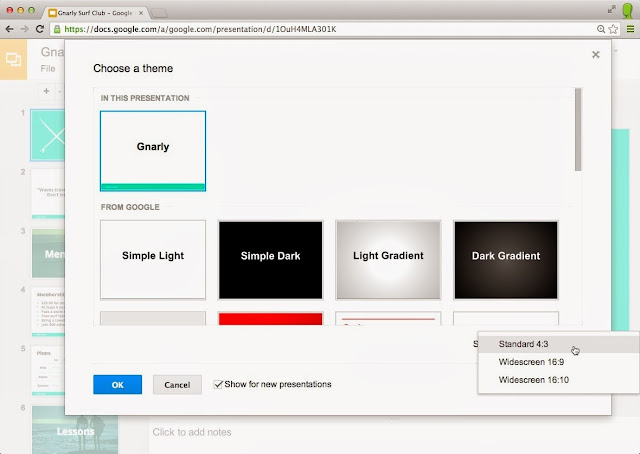Posted by Elliot Tally, Senior Director, Sanmina Editor's note: Our guest blogger this week is our long-time friend and customer, Elliot Tally, Senior Director of Enterprise Applications, Collaboration & Innovation at Sanmina, a global electronics manufacturer headquartered in San Jose, California with over 47,000 employees. See what other organizations that have gone Google have to say. Since I joined the company over 12 years ago, Sanmina business communications have evolved from an organization into an organism. In the past five years using Google’s tools, I have seen the business transform further from a traditional manufacturing company with change-resistant IT infrastructure, basic collaboration, and a reliance on resource-draining travel for “teamwork,” into a modern company that has embraced the cloud, breathing clean air through more inclusive collaboration, and fostering a flexible and dynamic environment for employees to work effectively where and when they need to.
In 2008, when we first looked at moving to the cloud, we wanted to reduce infrastructure and cut IT costs. We were dealing with a lot of data: 112 Exchange servers across 70 locations. We create 2 Terabytes of email per month, and our Guadalajara campus alone was spending $15,000 a quarter on backups. Plus, we were spending millions of dollars on Microsoft licenses. By choosing Google Apps, we now save about $1.5 million a year, reduced our on premise email infrastructure by more than 90% and have seen a reduction in servers, refocusing of staff, licensing costs and other operating expenditures. We only need two people, instead of six, to support Google Apps for our 21,000 employees who use email.

I knew moving to the cloud would impact our bottom line, what I didn’t realize is how it would influence the culture of our business and the way we get things done. Working across time zones used to involve countless emails, crowded teleconference rooms, and expensive travel. Employees quickly and organically embraced Google Docs to work together without worrying about time zones or physical location. Now we have more than 700,000 Google Docs, 3,200 Google Sites and 4,000 Google Groups spanning all functions of the business. For example, our product engineering teams use Google Sites to track documentation, planning, and product testing for many of their projects, including leveraging the platform for customer collaboration. Using Google+ Hangouts on a daily basis has cut travel costs and we find that employees feel more connected and productive, without the jetlag.
Google Drive has also helped us grow by facilitating the discovery and information sharing process during mergers. We used to manage acquisitions using file attachments for everything from the discovery questionnaires to legal contracts. There were too many attachments to create a record for everything. The draft content was usually shared via email or FTP and version control was a challenge. So when we purchased
BreconRidge in 2010 we decided to use a Google Site and Google Docs for the majority of the documentation. The advantages were threefold: active collaboration, inherent version control with synchronization, and ease of sharing. We shared docs internally and with BreconRidge throughout the process to reduce some of the travel requirements, be more transparent, and to facilitate the discovery process and negotiations. The increased collaboration & document control effectiveness resulted in this model becoming the de facto choice for managing subsequent M&A transactions.
Google Apps isn’t the only Google offering helping to streamline our business. In our factories, we’re in the process of replacing thousands of data collection points - spanning each part of the manufacturing line -- with commodity Android tablets. These tablets present a touch-enabled and rich interface for employees, which is readily available on their own mobile devices. Our plant managers appreciate the simplicity of the single interface and the automation; we have dramatically reduced the need for expensive PCs, paper or filing cabinets, and printed work instructions, creating instead a convenient platform for our engineers to target with innovative new apps using technology they already know. The tablets can also send notifications to supervisors and issue quality alerts, allowing for speedier resolution of problems in our plants. We’ve leveraged Google App Engine to host a machine maintenance and calibration system we developed to track equipment and spare parts, and automate the relevant business processes, reducing parts inventory and ensuring easily auditable compliance. Our Printed Circuit Board (PCB) plants even created an interface using the Google Drive API to programmatically create Google Spreadsheets from their PCB engineering design system for sharing with customers as part of the quoting process. We’ve been using the Google Search Appliance since 2009 and added 2 new Google Search Appliances 7.0 this year to index our intranet, our Google Apps content, and a few other internal content stores.
We exceeded our original goals of cutting costs and reducing IT infrastructure by more than we could have conceived of at the time, but the real benefits of “going Google” have emerged over the past four years. It’s much easier to quantify server reduction than the more intangible benefits of using Google Apps: employees working together seamlessly, testing creative solutions without investing in expensive hardware, and in the job satisfaction that I can provide my team by letting them focus on strategic projects. But, it’s exactly these types of activities that have evolved our business culture from a collection of independent teams into an agile multicellular company leading the industry with collaborative communication solutions.




.gif)













